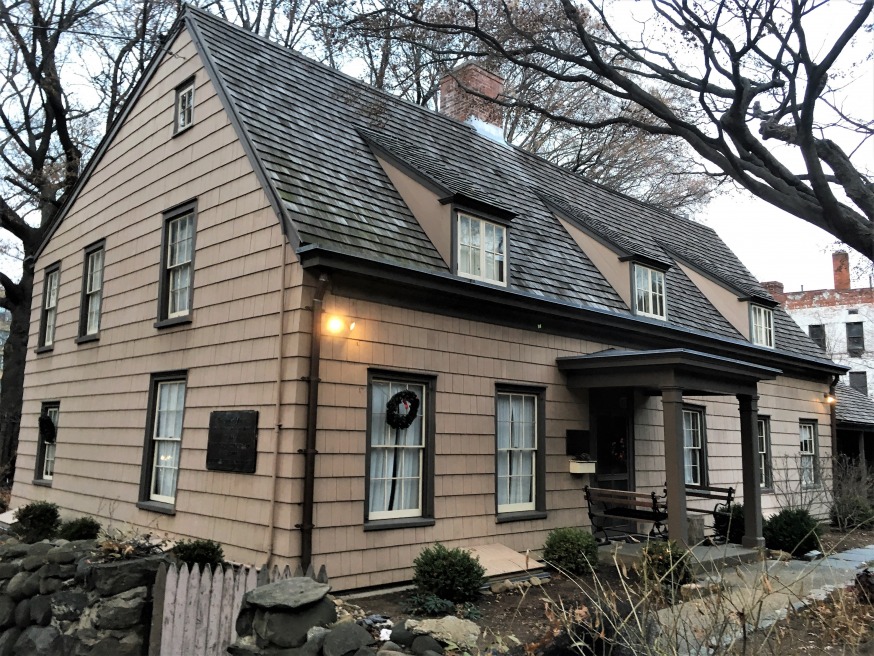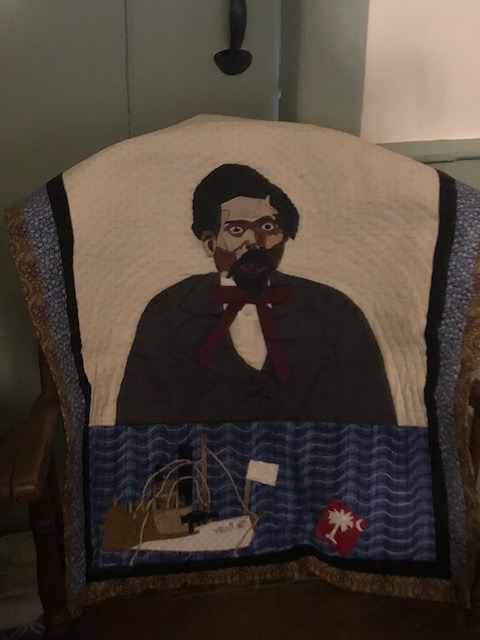
Residents can head to the Bowne House, located at 37-01 Bowne St., on Saturday and Sunday to learn about the landmark’s history as the Underground Railroad “safe house” and check out an abolitionist history-themed quilt exhibit. (Wikimedia Commons Photo)
Feb. 12, 2020 By Ryan Brady
The Bowne House in Flushing is offering special Black History Month programming that highlights the borough’s place in abolitionist history.
From 1 p.m. to 4 p.m. on Saturday, Feb. 15 and Sunday, Feb. 16, the Bowne House Historical Society will host tours at the house (37-01 Bowne St.) that teach the public about the Bowne family’s abolitionism and the building’s role as a stop on the Underground Railroad.
Additionally, through the last day of the month, attendees will be able to see an exhibit of abolitionist-themed quilts by Thadine Wormly-Herndon, a current-day quilter who lives in Flushing.
One of the Wormly-Herndon’s pieces portrays Harriet Tubman, the famous Underground Railroad leader. Another portrays Mary Ann Elizabeth Shaw, an African-American teacher and benefactor who helped grow the Flushing Free Library (which later became part of the Queens Library organization) and other institutions that served black people. Shaw was the principal of the Colored School at Flushing.

Created by artist Thadine Wormly-Herndon, this quilt of abolitionist legend Robert Smalls is on display for a Bowne House exhibit. (Photo Courtesy Thadine Wormly-Herndon)
“I’ve always been a history buff,” said Wormly-Herndon, who is a founder of the Pomonok Quilt Guild. “When I find out information about some people, I just get the inspiration to make a quilt.”
The artist is actually a distant relative of one of the famous abolitionists portrayed in her exhibit, Robert Smalls, who heroically liberated himself and a group of fellow slaves.
Wormly-Herndon will also be giving a quilting workshop on Sunday, Feb. 16, at the Quaker Meeting House at 137-16 Northern Blvd. between 2 and 4 p.m. Entrance is included in the Bowne House’s cost of admission, which is $10 for adults and $8 for seniors and students.
One hour before the workshop starts, Bowne House Historical Society Archivist Charlotte Jackson will give a historical talk at the same location.
Built around 1661, the Bowne House is known as the oldest home in Queens.
John Bowne, its original namesake, was famously arrested at his home by Dutch authorities in 1662 while he was having a Quaker meeting. He successfully fought the arrest, winning his freedom at a trial held by the Dutch West India Trading Company, which from then on instituted a policy of religious tolerance for settlers in what is now called Flushing.
One display at the Black History Month exhibit shows a 1850 letter to William Parsons, a Quaker who was close to the Bowne family, from the abolitionist Simeon Johnson, which asks for help in getting a “colored man” to safety.
But the family’s history of abolitionism even extends beyond the house’s role as a “safe house” for African-Americans escaping slavery. Robert Bowne, a businessman who was John Bowne’s great grandson, helped found the New York Manumission Society in 1785 with other prominent figures, including Alexander Hamilton and John Jay. The group was a major force behind New York’s adoption of the Gradual Emancipation Law of 1799.
The Flushing Female Association, a group of abolitionist Quaker women established in 1814, used the Bowne House as its meeting place. The group’s work included the creation of a racially integrated, free school that provided vocational training and education to poor children.





